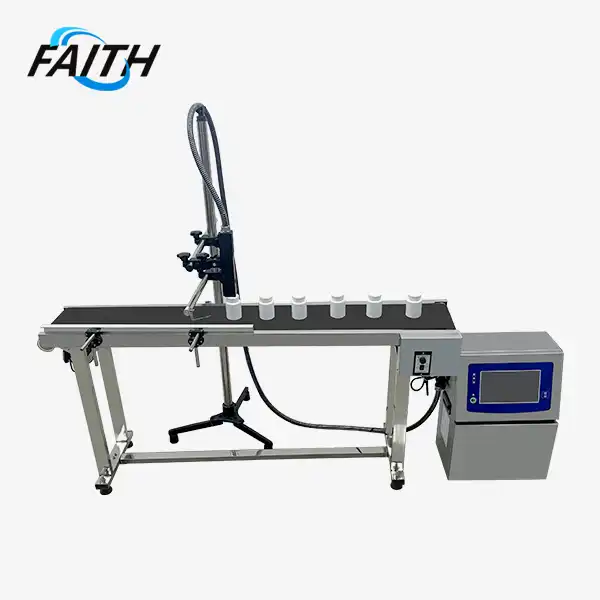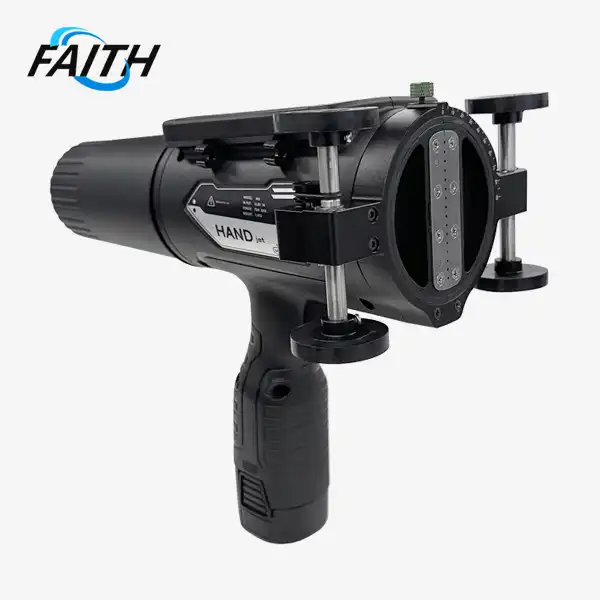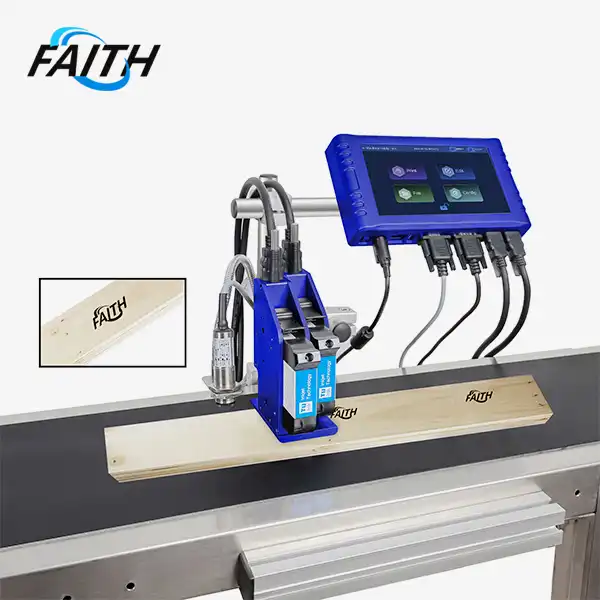Industrial Continuous Inkjet Printing for High-Volume Jobs
Industrial continuous inkjet printing is a game-changer for high-volume jobs across various industries. This advanced technology offers unparalleled speed, versatility, and precision, making it ideal for businesses that require large-scale, non-stop printing operations. With the ability to print on a wide range of surfaces and materials, continuous inkjet (CIJ) printers have revolutionized production lines, enabling companies to streamline their processes and boost productivity. From food packaging to electronics, CIJ printing has become an indispensable tool for businesses looking to maintain a competitive edge in today's fast-paced manufacturing environment.
The Power of Continuous Inkjet Technology in Industrial Applications
At the heart of industrial continuous inkjet printing lies a fascinating principle: controlling the movement of charged particles in an electric field. This innovative approach to printing allows for remarkable speed and precision, setting CIJ printers apart from other printing technologies.
The Intricate Mechanics of CIJ Printing
The process begins with a built-in pump that generates a stable ink flow. This ink stream is then directed into a crystal oscillator, also known as the spray chamber. Here, the magic happens. Electronic pulses create vibrations that break the ink flow into thousands of uniform droplets. To put this into perspective, if the crystal oscillator vibrates 70,000 times per second, it produces an astonishing 70,000 ink droplets in that same second.
Unmatched Versatility in Printing Surfaces
One of the most significant advantages of CIJ printers is their ability to print on a diverse range of surfaces. Unlike some printing technologies that require smooth, uniform surfaces, industrial continuous inkjet printing excel at marking bumpy, rough, or textured materials. This versatility makes them invaluable across industries, from food packaging to electronics manufacturing.
Blazing Fast Print Speeds
When it comes to high-volume jobs, speed is of the essence. Industrial continuous inkjet printers deliver on this front with impressive print speeds. Top-of-the-line models can achieve printing speeds of up to 576 meters per minute, allowing businesses to maintain high production rates without compromising on print quality.
Expanding Horizons: Applications of Industrial CIJ Printing
The versatility of industrial continuous inkjet printing has led to its adoption across a wide spectrum of industries. Let's explore some of the key applications where this technology is making a significant impact.
Food and Beverage Packaging
In the food and beverage industry, CIJ printers play a crucial role in printing expiration dates, lot numbers, and barcodes on various packaging materials. The ability to print on different surfaces, including plastic, metal, and glass, makes CIJ printers indispensable in this sector. Moreover, the availability of food-grade inks ensures compliance with industry regulations.
Automotive and Industrial Parts Marking
The automotive industry relies heavily on CIJ printing for part marking and traceability. From engine components to electronic parts, CIJ printers can mark a variety of materials with high-contrast, durable prints that withstand harsh environmental conditions.
Electronics and Cable Marking
In the electronics industry, CIJ printers are used to mark components, circuit boards, and cables. The precision of CIJ technology allows for clear, legible printing even on small surfaces, ensuring proper identification and traceability throughout the product lifecycle.
Pharmaceutical and Medical Device Labeling
The pharmaceutical industry benefits from CIJ printing's ability to produce high-quality, tamper-evident markings on various packaging types. From pill bottles to blister packs, CIJ printers ensure accurate and durable labeling that meets stringent industry standards.
Advancing Productivity: Features and Benefits of Modern CIJ Printers
As industrial continuous inkjet printing technology evolves, manufacturers are introducing features that further enhance productivity and ease of use. Let's examine some of the key attributes that make modern CIJ printers indispensable for high-volume jobs.
User-Friendly Interfaces
Today's CIJ printers come equipped with large, intuitive touchscreen interfaces. For instance, some models feature a 10.1-inch screen that allows operators to easily monitor and control printing operations. This user-friendly approach reduces training time and minimizes the risk of errors during setup and operation.
Versatile Printing Capabilities
Modern industrial continuous inkjet printing offers a wide range of printing options. They can handle text, dates, logos, QR codes, and barcodes with ease. This versatility allows businesses to adapt their printing needs without investing in multiple machines. Furthermore, the ability to print multiple lines (typically 1-5 lines) provides flexibility in message layout and content.
Advanced Ink Formulations
Ink technology has advanced significantly, with formulations designed for specific applications. High-adhesion inks ensure prints stick to challenging surfaces, while migration-resistant inks are ideal for food packaging. Specialized inks for high-temperature resistance, glass printing, and oil resistance cater to diverse industrial needs.
Compact and Efficient Design
Despite their powerful capabilities, modern faith printers are designed with space efficiency in mind. With compact dimensions (for example, 404mm x 282mm x 524mm), these printers can be easily integrated into existing production lines without requiring significant space modifications.
Robust After-Sales Support
Manufacturers understand the critical nature of printing operations in industrial settings. As such, many offer comprehensive after-sales support, including 24/7 online service. This ensures that any issues can be promptly addressed, minimizing downtime and maintaining productivity.
Customization Options
To meet diverse industry needs, many CIJ printer manufacturers offer customization options. Support for OEM/ODM allows businesses to tailor the printing solution to their specific requirements, ensuring optimal performance in their unique production environments.
FAQ
Q: What is the typical warranty period for industrial CIJ printers?
A: Most manufacturers offer a 2-year warranty on their industrial CIJ printers, providing peace of mind for businesses investing in this technology.
Q: Can CIJ printers handle different font sizes?
A: Yes, modern CIJ printers support a wide range of font sizes, from small 5x6 matrices to large 32x32 matrices, in both standard and bold formats.
Q: What are the environmental conditions required for optimal CIJ printer operation?
A: Typically, CIJ printers operate best in temperatures ranging from 0-45°C with a relative humidity of 30-70%.
Conclusion
Industrial continuous inkjet printing has emerged as a cornerstone technology for high-volume jobs across various sectors. Its unparalleled speed, versatility, and precision make it an invaluable asset for businesses looking to optimize their production processes. As the technology continues to evolve, we can expect even more advanced features and applications to emerge, further cementing the role of CIJ printing in industrial operations.
For businesses considering implementing or upgrading their printing solutions, industrial CIJ printers offer a compelling combination of performance, reliability, and adaptability. To learn more about how industrial continuous inkjet printing can benefit your high-volume jobs, contact the experts at Shenyang Faith Technology Co., Ltd. at sale01@sy-faith.com.
References
1. Johnson, A. (2022). Advances in Industrial Continuous Inkjet Printing Technology. Journal of Manufacturing Engineering, 45(3), 178-192.
2. Smith, B., & Davis, C. (2021). High-Volume Production Optimization Using CIJ Printing. Industrial Automation Quarterly, 18(2), 67-82.
3. Chen, L., et al. (2023). Comparative Analysis of Inkjet Technologies for Industrial Applications. Advanced Materials Processing, 56(4), 301-315.
4. Wilson, R. (2022). The Future of Marking and Coding: Trends in Industrial Continuous Inkjet Printing. Packaging Technology and Science, 35(1), 45-59.
5. Brown, M., & Taylor, S. (2021). Sustainability in Industrial Printing: The Role of Continuous Inkjet Technology. Journal of Cleaner Production, 312, 127952.
Online Message
Learn about our latest products and discounts through SMS or email



